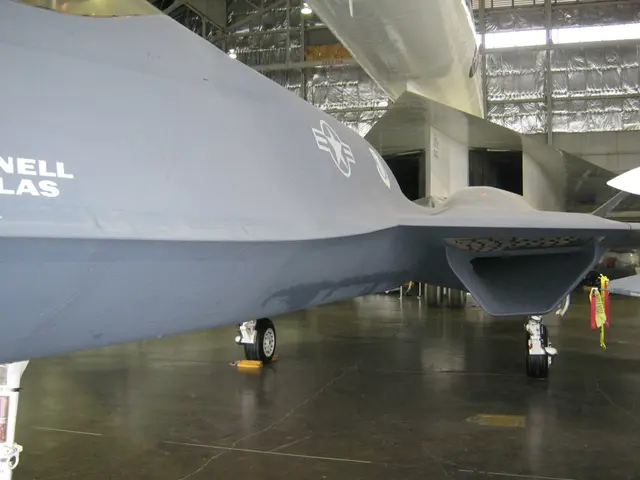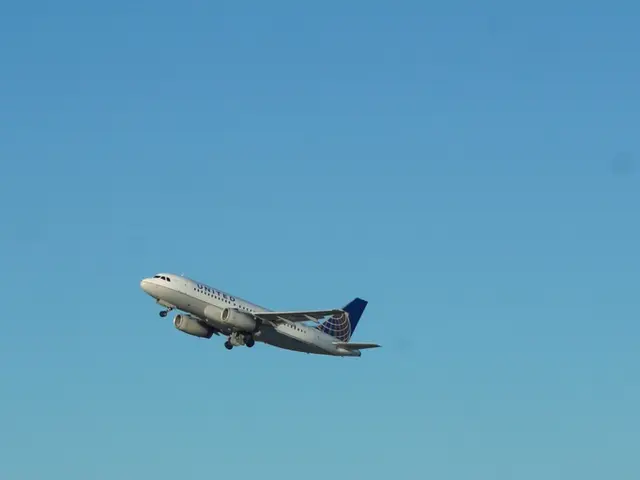Increased Capacity at Airports: Insight into Airports with More Than Three Runways, including their Labeling and Identification
Going above and beyond the runway
Airport runway labeling and calling systems are crucial in ensuring smooth and secure aviation operations. However, as airport facilities grow to accommodate soaring air traffic, some airports must extend beyond the three default runways. Let's dive into the implications of multiple runways, examine their designation methods, and scrutinize the impact on air traffic control and overall airport functionality.
Reasons for Expanding Beyond Three Runways
Airports with high passenger and cargo volumes frequently find that one or two runways fall short of handling optimal traffic volumes, particularly in major urban centers and rapidly expanding cities. Having four, six, or even eight runways enables such airports to accommodate more aircraft, lessen delays, and smoothly manage high-traffic situations during peak hours. The following factors shed light on why airports may require more than three runways:
- Increased Capacity: More runways mean more flights per hour, leading to an improved overall handling capacity for the airport.
- Greater Operational Flexibility: Additional runways provide the flexibility to carry out maintenance schedules across various runways with minimal impact on general operations.
- Enhanced Weather Adaptability: Multiple runways oriented in various directions offer pilots options during less-than-ideal weather conditions, ensuring optimal wind alignments for takeoffs and landings.
How Runways are Named and Designated
Each runway carries a unique name based on its alignment with the magnetic compass. For instance, a runway with a north-south alignment would be designated as 18 for a southward direction and 36 for a northward direction. This numbering simplifies navigation and communication for pilots and air traffic control. A rundown of primary runway naming principles includes:
- Runway Numbers: Each number corresponds to one-tenth of the magnetic azimuth, rounded to the nearest ten degrees.
- Dual Runways: If two runways are parallel, they are designated with "L" (left) and "R" (right).
- Triple Runways: When there are three parallel runways, "L," "C" (center), and "R" are utilized.
When an airport has over three parallel runways, the existing labeling system finds its limitations. In such instances, airports introduce resourceful methods for naming additional runways to prevent confusion. Here are the most common approaches:
1. Offsetting the Runway Directions
When airports host multiple runways oriented in the same direction, an offset by a few degrees in the magnetic direction is often employed. This slight offset allows for the re-naming of additional runways without significant confusion. For example, Los Angeles International Airport (LAX) features four parallel runways, with two labeled as 24L and 24R, while the other two are assigned 25L and 25R. This approach distinguishes each runway without requiring a complete renaming system.
2. Adopting More Letter Designations (Infrequently Used)
In cases where more than three runways exist, some airports have considered using more letters beyond L, C, and R (such as A, B, etc.). Nevertheless, this approach is less common due to the likelihood of overwhelming pilots with a myriad of poorly-remembered letter designations, resulting in potential confusion. Consequently, most airports avoid this technique, sticking with numeric adjustments instead.
3. Grouping Runways by Distance
When an airport is vast, it may build two pairs of parallel runways with substantial distances between the pairs. These can be designated as distinct groups with slight numerical adjustments. This approach is less common but can be found in huge international airports where substantial land allows for extended parallel runways.
4. Non-Standard Naming Conventions (Occasionally Used)
Some airports, particularly outside the United States, have begun exploring alternative, non-standard runway naming conventions. However, such methods are uncommon and may generate complications, as they frequently diverge from the International Civil Aviation Organization (ICAO) and Federal Aviation Administration (FAA) standards. Although seldom adopted, non-standard naming is sometimes observed in mammoth airports with singular operational requirements.
The Impact of Multiple Runways on Air Traffic Control
Managing multiple runways results in heightened intricacies for air traffic control (ATC). The ATC system must oversee numerous active runways, maintain precise communication with pilots, and collaborate closely with ground operations. Key aspects ATC must oversee include:
- Enhanced Communication Protocols: Increased runways mandate improved communication between pilots and controllers, necessitating clear and concise language.
- Runway Sequencing and Separation: ATC coordinates flights to ensure sufficient distances between aircraft, whether they are taking off or landing, on multiple runways. Controllers often sequence flights based on runway availability and wind conditions.
- Advanced Technology Integration: Large airports implement advanced ground radar and automation systems to help controllers effectively manage multiple runways.
Top-Tier Airports with More Than Three Runways
Numerous international airports exemplify successful multi-runway systems:
- Los Angeles International Airport (LAX): LAX operates four parallel runways by using a minor directional offset, distinguishing them as 24L, 24R, 25L, and 25R.
- O'Hare International Airport (ORD): Chicago's O'Hare features eight runways, some of which are parallel while others are cross-aligned, providing operational flexibility.
- Dallas/Fort Worth International Airport (DFW): With seven runways, DFW adopts a blend of parallel and perpendicular orientations, tailoring operations based on weather conditions and traffic flow.
These airports cater to some of the most significant passenger traffic in the world and rely on their runway systems to keep up with such high volumes.
Istanbul Airport (LTFM) as a Blueprint for Multi-Runway Systems
Istanbul Airport (LTFM) offers an illustrative example of advanced runway management for airports with multiple parallel runways. It operates five runways, each strategically arranged to streamline traffic flow and reduce congestion. These include:
- 16L/34R and 16R/34L: Parallel runways, each measuring 3,750 meters, which handle both arrivals and departures.
- 17L/35R and 17R/35L: Each of these runways, measuring 4,100 meters, operates separated operations with 17L reserved for arrivals and 17R for departures.
- 18/36: A shorter 3,060-meter runway used for adaptable arrival and departure operations.
This configuration enables Istanbul Airport to manage simultaneous operations seamlessly and minimize delays even during peak traffic periods. Utilizing these specific runway designations and lengths, the airport efficiently manages high volumes of passengers and cargo. This method positions LTFM as a benchmark for large-scale airport operations, particularly for airports with complex traffic demands.
Caveats and Limitations:Managing more than three runways introduces several challenges for airport management and aviation authorities:
- Potential for Confusion: With multiple designations, there is a risk of confusion among pilots, especially when less commonly used letter designations are implemented.
- Infrastructure Constraints: Expanding runway systems necessitate significant land and investment, which may be scarce in densely populated areas.
- Enhanced Operational Complexity: Increased runways result in elevated demands on air traffic control, which may require augmented training and operational costs.
Wrapping it Up
As airports grow to accommodate rising air traffic demands, their runway designation systems evolve in complexity. By comprehending and skillfully incorporating minor directional adjustments and unique naming methods, airports effectively manage multiple parallel runways, balancing safety with efficiency. This approach guarantees unambiguous communication between pilots and air traffic controllers, fostering smoother operations at top-tier airports worldwide.
Referenced Resources and Further Reading
- International Civil Aviation Organization (ICAO), Annex 14 - Aerodromes. ICAO, 2022.
- Federal Aviation Administration (FAA). Air Traffic Control Manual. FAA, 2023.
- Transport Canada. Airport Operations and Runway Management. Government of Canada, 2021.
Additional Insights:
- Runway Numbers: Runway numbers are based on their magnetic direction. For example, a runway aligned with a magnetic heading of 135 degrees would be designated as Runway 14[1].
- Parallel Runways: When there are multiple parallel runways, letters are added to the runway number to distinguish them. The letters employed are L (left), R (right), and C (center). For instance, if there are four parallel runways, they might be designated as 14L, 14R, 14C, and another letter or designation could be used for the fourth if necessary, though this is seldom employed[1].
- Non-Parallel Runways: For non-parallel runways, each runway is accorded a unique number based on its magnetic direction. This system ensures that every runway has a distinct, recognizable label[1].
In summary, runway designations in airports with more than three runways adhere to the standard magnetic direction-based numbering system, with parallel runways distinguished by additional letters.
- The increased capacity provided by multiple runways allows airports with high traffic volumes to accommodate more aircraft and lessen delays, enabling them to manage high-traffic situations during peak hours.
- To prevent confusion when an airport has over three parallel runways, airports introduce resourceful methods for naming additional runways. This can include offsetting the runway directions, adopting more letter designations (though this is less common), grouping runways by distance, or using non-standard naming conventions.








